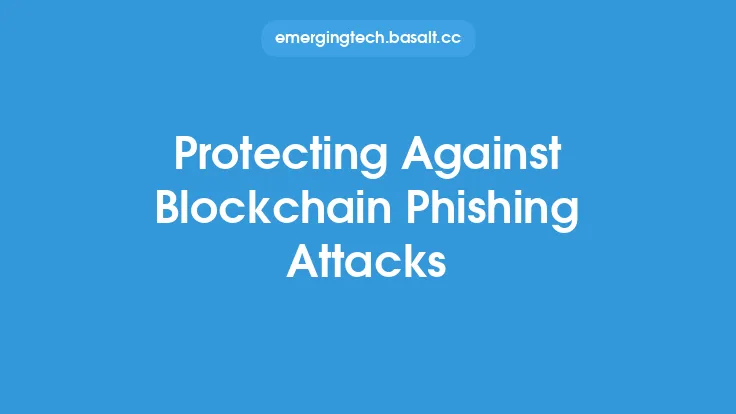Phishing attacks are a type of cybercrime that involves tricking individuals into revealing sensitive information, such as passwords, credit card numbers, or personal data. These attacks are typically carried out through email, phone, or text message, and can be highly sophisticated, making them difficult to detect. In order to protect yourself from phishing attacks, it's essential to understand how they work, how to identify them, and how to avoid falling victim to them.
What are Phishing Attacks?
Phishing attacks are a form of social engineering, which involves manipulating individuals into performing a certain action or revealing sensitive information. Phishing attacks can take many forms, including emails, phone calls, text messages, and even social media messages. The goal of a phishing attack is to trick the victim into revealing sensitive information, such as login credentials, financial information, or personal data. Phishing attacks can be highly targeted, using information gathered from social media, public records, or other sources to create a convincing and personalized message.
Types of Phishing Attacks
There are several types of phishing attacks, each with its own unique characteristics and tactics. Some common types of phishing attacks include:
- Spear phishing: This type of phishing attack involves targeting a specific individual or group with a personalized message. Spear phishing attacks are often highly sophisticated and can be difficult to detect.
- Whaling: This type of phishing attack involves targeting high-level executives or other individuals with access to sensitive information. Whaling attacks are often highly personalized and can be very convincing.
- Smishing: This type of phishing attack involves sending text messages to victims, often with a link to a malicious website or a request for sensitive information.
- Vishing: This type of phishing attack involves making phone calls to victims, often with a request for sensitive information or a attempt to install malware on the victim's device.
How to Identify Phishing Attacks
Identifying phishing attacks can be challenging, but there are several red flags to look out for. Some common indicators of a phishing attack include:
- Urgency: Phishing attacks often create a sense of urgency, attempting to trick the victim into acting quickly without thinking.
- Spelling and grammar mistakes: Phishing attacks often contain spelling and grammar mistakes, which can be a sign that the message is not legitimate.
- Suspicious links or attachments: Phishing attacks often include links or attachments that can install malware or steal sensitive information.
- Requests for sensitive information: Phishing attacks often request sensitive information, such as login credentials or financial information.
- Lack of personalization: Phishing attacks often lack personalization, using generic greetings or failing to address the victim by name.
How to Avoid Phishing Attacks
Avoiding phishing attacks requires a combination of technical measures and best practices. Some steps you can take to avoid phishing attacks include:
- Using anti-virus software and a firewall to protect your device from malware and other threats.
- Being cautious when clicking on links or opening attachments from unknown sources.
- Verifying the authenticity of messages and requests for sensitive information.
- Using strong, unique passwords and keeping them confidential.
- Enabling two-factor authentication to add an extra layer of security to your accounts.
- Regularly updating your operating system, browser, and other software to ensure you have the latest security patches.
Technical Measures to Prevent Phishing Attacks
In addition to best practices, there are several technical measures that can be taken to prevent phishing attacks. Some of these measures include:
- Implementing a web application firewall (WAF) to protect against phishing attacks and other types of cyber threats.
- Using a secure email gateway to scan incoming emails for phishing attacks and other types of malware.
- Implementing a phishing detection system to identify and block phishing attacks in real-time.
- Using a virtual private network (VPN) to encrypt internet traffic and protect against phishing attacks and other types of cyber threats.
- Implementing a security information and event management (SIEM) system to monitor and analyze security-related data and identify potential phishing attacks.
Conclusion
Phishing attacks are a serious threat to individuals and organizations, and can result in significant financial and reputational damage. By understanding how phishing attacks work, how to identify them, and how to avoid falling victim to them, you can protect yourself and your organization from these types of cyber threats. Remember to always be cautious when clicking on links or opening attachments from unknown sources, and to verify the authenticity of messages and requests for sensitive information. By taking a combination of technical measures and best practices, you can significantly reduce the risk of falling victim to a phishing attack.





